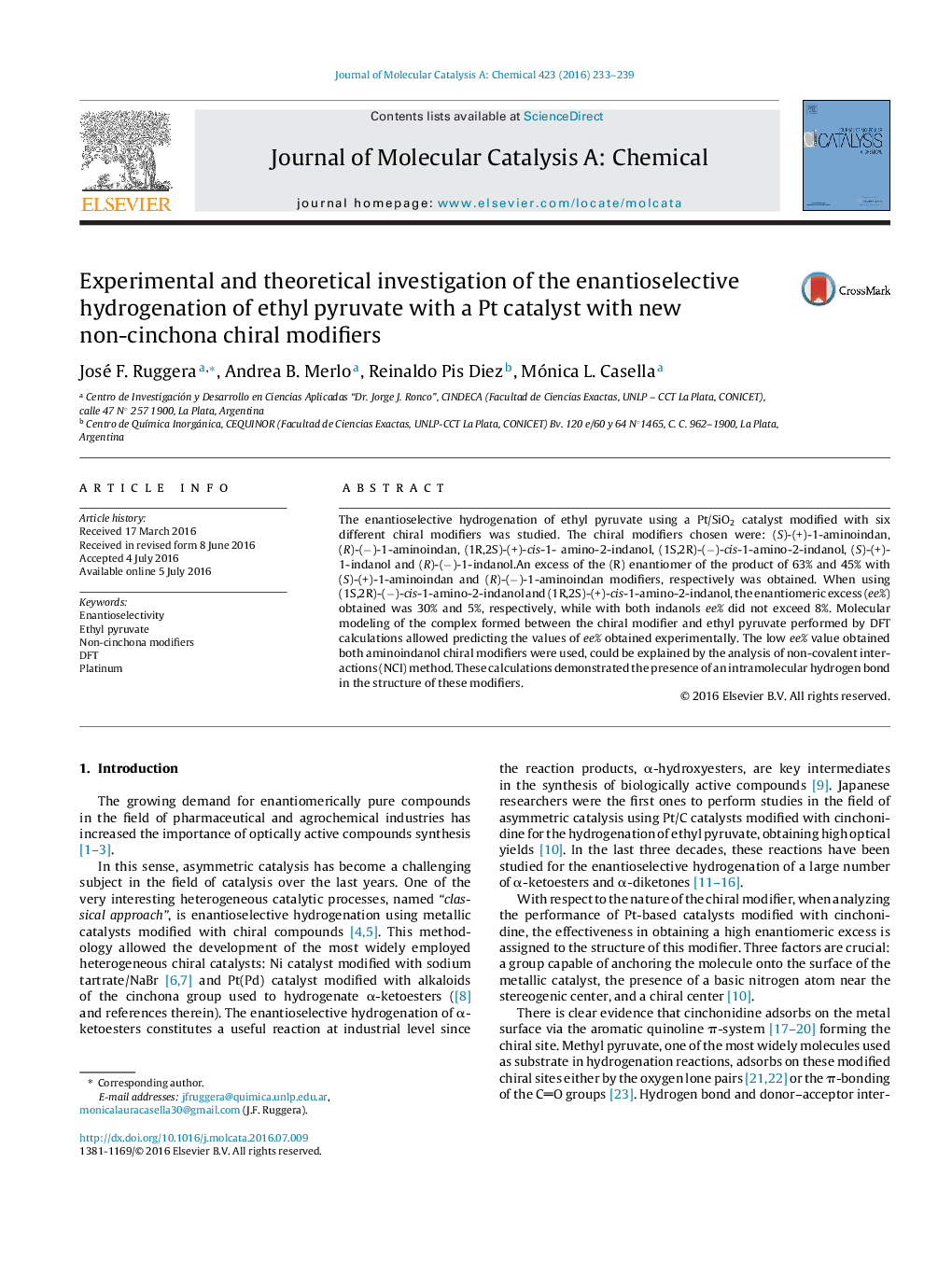| Article ID | Journal | Published Year | Pages | File Type |
|---|---|---|---|---|
| 64544 | Journal of Molecular Catalysis A: Chemical | 2016 | 7 Pages |
•Ethyl pyruvate was hydrogenated on a Pt/SiO2 catalyst modified with chiral modifiers.•An enantiomeric excess (ee%) of 63% was obtained with (S)-(+)-1-aminoindan.•Density Functional Theory calculations allowed predicting ee% obtained experimentally.•Low ee% for aminoindanol was explained by the noncovalent interaction approach.
The enantioselective hydrogenation of ethyl pyruvate using a Pt/SiO2 catalyst modified with six different chiral modifiers was studied. The chiral modifiers chosen were: (S)-(+)-1-aminoindan, (R)-(−)-1-aminoindan, (1R,2S)-(+)-cis-1- amino-2-indanol, (1S,2R)-(−)-cis-1-amino-2-indanol, (S)-(+)-1-indanol and (R)-(−)-1-indanol.An excess of the (R) enantiomer of the product of 63% and 45% with (S)-(+)-1-aminoindan and (R)-(−)-1-aminoindan modifiers, respectively was obtained. When using (1S,2R)-(−)-cis-1-amino-2-indanol and (1R,2S)-(+)-cis-1-amino-2-indanol, the enantiomeric excess (ee%) obtained was 30% and 5%, respectively, while with both indanols ee% did not exceed 8%. Molecular modeling of the complex formed between the chiral modifier and ethyl pyruvate performed by DFT calculations allowed predicting the values of ee% obtained experimentally. The low ee% value obtained both aminoindanol chiral modifiers were used, could be explained by the analysis of non-covalent interactions (NCI) method. These calculations demonstrated the presence of an intramolecular hydrogen bond in the structure of these modifiers.
Graphical abstractFigure optionsDownload full-size imageDownload high-quality image (189 K)Download as PowerPoint slide
